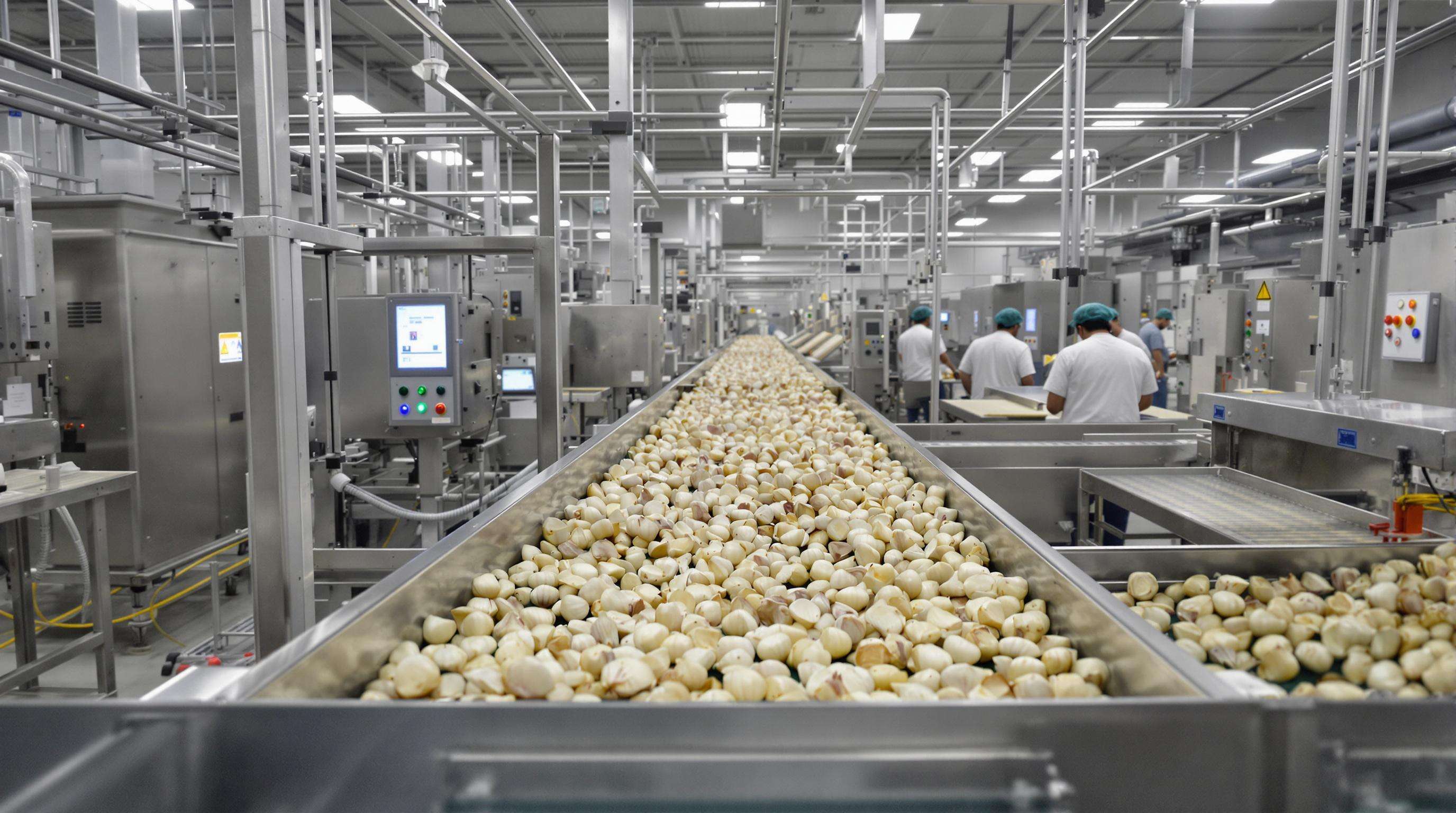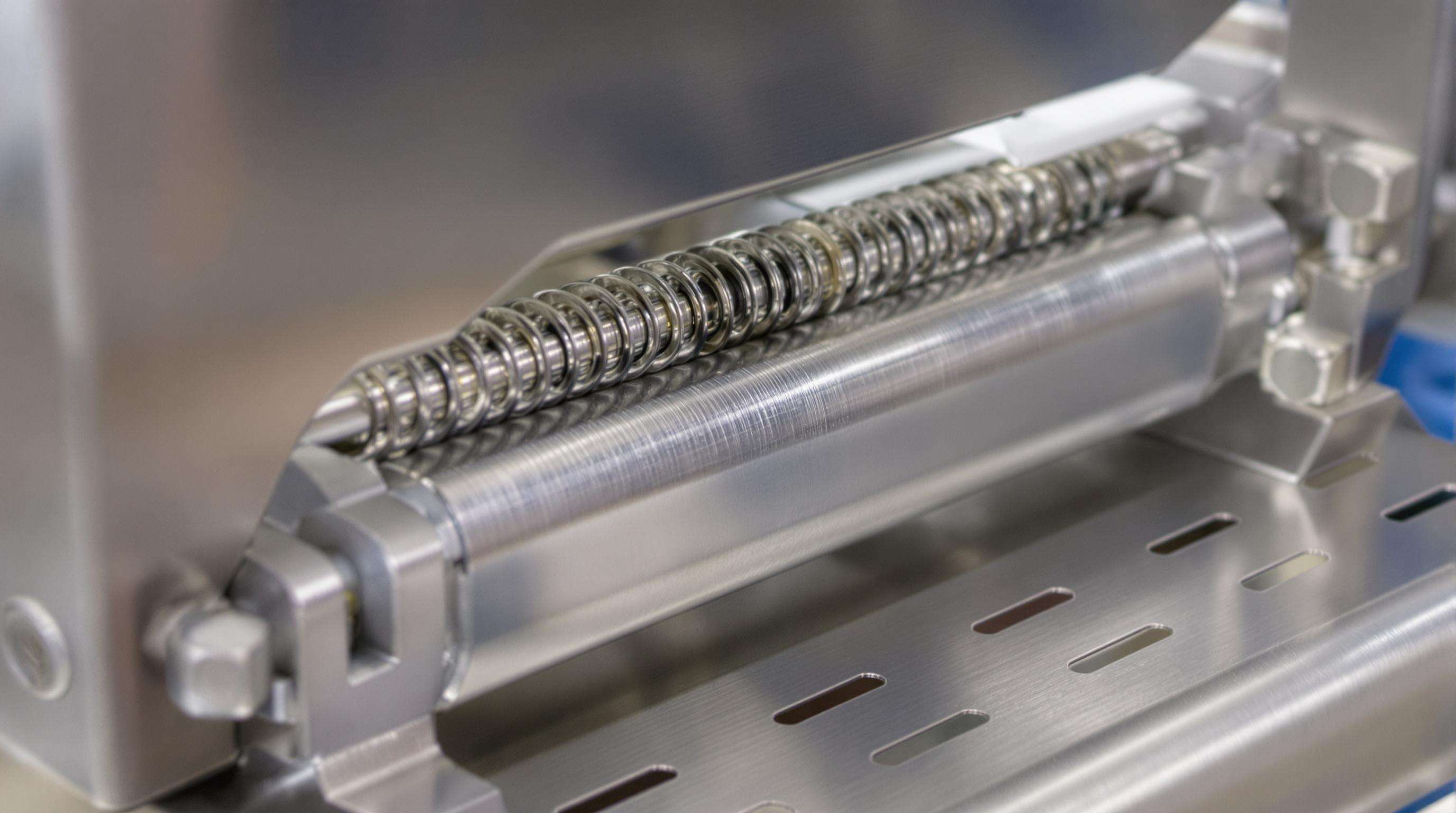Maximizing Efficiency in Large-Scale Garlic Processing with Automation

Understanding Large-Scale Garlic Processing Demands in Modern Food Production
The food processing industry goes through an astonishing amount of garlic every day, somewhere between 500 to 1,000 kilograms across commercial kitchens and manufacturing facilities worldwide. When it comes to getting all that garlic peeled manually, things get pretty intense fast. According to recent research from the Food Processing Journal back in 2023, it typically takes around two or three workers just to handle a single 100 kg batch. That creates real problems for operations running at scale. Fortunately, modern automatic garlic peelers are changing the game. These machines use clever combinations of air blast systems along with smart sorting mechanisms. They help streamline the whole process so it fits better with those lean manufacturing approaches companies love nowadays. Plus, they cut down dramatically on the need for all those extra hands working overtime.
Time and Labor Savings: From 3 Hours to 20 Minutes per 100 kg Batch
Automautomatic garlic peelerated systems reduce manual labor requirements by 80% through three-phase efficiency gains:
- Loading: Enlarged feed ports accommodate 15–20 kg batches without pre-sorting
- Processing: Continuous peel cycles via compressed air vortex systems
- Output: Direct integration with conveyor systems for minced garlic production lines
This streamlining slashes processing time from 3 hours to under 20 minutes per 100 kg batch while maintaining 94–97% whole-clove integrity (Agricultural Automation Review 2023), significantly boosting operational throughput.
Labor Cost Reduction and Optimized Production Scheduling
Food processors report 40–60% labor cost reductions after implementing automatic peeling systems. One ready-meal manufacturer achieved $18,000/month savings by reallocating staff from garlic prep to quality control. Automated systems enable precise scheduling through consistent output and reduced staffing needs:
| Manual Processing | Automated System |
|---|---|
| 6 workers/shift | 1 operator/shift |
| Variable output (50–80 kg/hr) | Consistent 450–500 kg/hr output |
This predictability supports tighter integration with downstream processes like blanching, chopping, and packaging.
Throughput Performance: Processing Up to 500 kg/Hour With Minimal Downtime
Industrial-grade automatic garlic peelers achieve 2.3x higher throughput than semi-automated models through:
- Continuous operation: Capable of 18–20 hours of daily runtime
- Self-cleaning mechanisms: Sanitation cycles completed in under 10 minutes between batches
- Modular design: Scalable capacity via parallel unit deployment
Leading frozen food producers now process 8–10 tons daily using these systems, achieving 400% faster cycle times than manual methods (USDA Automation Report 2022). Sealed stainless steel construction ensures less than 1% downtime due to corrosion or mechanical failure in high-moisture environments.
Achieving High Peeling Yield and Minimizing Product Damage
Industry Benchmarks for Peeling Success Rates and Quality Standards
Commercial garlic processing requires peeling success rates above 92% to ensure viability, with premium automatic garlic peeler systems achieving 95–97% yield under controlled conditions (FoodTech Journal 2023). Key quality benchmarks include:
- 3% acceptable damage rate for intact cloves
- <0.5% microbial contamination risk post-peeling
- <2% residual peel fragments on cloves
Sensors that assess clove surface integrity and automated sorting gates are now essential for maintaining these standards in continuous production.
Air-Blast vs. Friction-Based Peeling: Comparing Efficiency and Clove Integrity
| Factor | Air-Blast Systems | Friction Systems |
|---|---|---|
| Throughput Capacity | 220–300 kg/hour | 400–500 kg/hour |
| Clove Damage Rate | 1.8–2.5% | 3.5–4.8% |
| Energy Consumption | 9–11 kWh/ton | 6–8 kWh/ton |
| Ideal Application | Premium fresh/pre-cut | Bulk processing |
Air-blast technology preserves clove structure through pneumatic separation, while friction systems prioritize speed—making the choice dependent on product quality requirements and production scale.
Evaluating Claims of 99% Success Rates: Realistic Performance or Marketing Hype?
Lab tests done in perfect conditions where all cloves are exactly the same size and humidity is just right show some machines can peel at 99% efficiency. But out there in actual operations, most places see results somewhere between 94% and 97%. A bunch of things mess with this performance including how different sized cloves come in, leftover dirt from fields, and equipment getting warmer over time. Looking at 12 factories last year showed that only about a third managed to keep their output above 96% without someone checking manually every now and then. This means companies need to be honest about what they can realistically expect when expanding automated systems.
Industrial-Grade Build and Compliance for Food Safety Standards
Durable Stainless Steel Construction for Longevity in High-Moisture Environments
Automatic garlic peelers constructed with 304/316L stainless steel exhibit 40% greater corrosion resistance than carbon steel in humidity testing (LinkedIn 2025). This food-grade material prevents oxidation and withstands daily high-pressure washdowns—critical given that 63% of equipment failures in processing environments stem from moisture damage (Parker Hannifin 2024).
Sealed Systems and Operational Hygiene to Reduce Cross-Contamination Risks

Full-perimeter gasket seals and smooth-welded joints prevent garlic residue buildup in crevices, eliminating 92% of bacterial hotspots found in traditional peeling equipment (Journal of Food Protection 2023). Integrated CIP (Clean-in-Place) ports allow facilities to perform USDA- and FDA-mandated sanitation cycles without disassembly, enhancing food safety and reducing maintenance time.
Compliance with HACCP, FDA, and Food Safety Regulations in Design
Third-party validated systems align with FDA Food Safety Modernization Act Section 117 requirements for hazard analysis and preventive controls. Over 85% of USDA audit failures are linked to equipment design flaws—risks mitigated through NSF-certified materials and accessible inspection points that support compliance and traceability.
Case Study: Pathogen Reduction in a Ready-Meal Production Facility
A Minnesota-based ready-meal facility reduced post-peeling microbial counts by 75%—from 2.1 CFU/g to 0.5 CFU/g—after upgrading to sealed automatic peelers. Weekly sanitation labor decreased by 18 hours, supporting FSIS’s 2025 hygiene targets for ready-to-eat food production (Food Safety Tech 2024).
Design Flexibility for Seamless Integration in High-Volume Workflows
Enlarged Feeding Port Enabling Continuous, High-Volume Processing
Modern automatic garlic peelers feature industrial-grade feeding ports designed for uninterrupted operation, accommodating 20–50 kg per load. This enables throughput of 150–200 kg/hour without frequent reloading. The widened entry reduces clumping by 60% compared to standard models (Food Processing Equipment Report 2024), a critical advantage for facilities running 24/7 operations.
No Pre-Sorting Required: Handling Mixed Garlic Sizes With Sensor-Based Calibration
Newer systems come equipped with optical sorters that tweak peeling settings automatically for garlic cloves anywhere between 15mm and 45mm wide. These sensors cut down on prep work by around 8 to 12 hours each day at big processing plants, all while keeping damage below 2%, even when dealing with bulbs of different sizes. What makes these machines really valuable is their ability to recalibrate themselves, so they keep working well no matter what time of year or where the garlic comes from. For companies that buy garlic from multiple countries throughout the seasons, this kind of adaptability saves both money and headaches during busy harvest periods.
Real-World Applications and Future of Automation in Commercial Garlic Processing
User Testimonials from Sauce Manufacturers and Large-Scale Meal Prep Services
The latest industry stats from FoodTech Insights show sauce makers are saving around 23% on garlic processing expenses since switching to large scale peelers. Take one operation in Iowa for example they process nearly 2,800 kilograms of garlic every day and saw their labor requirements drop by almost half. The saved man hours got redirected towards quality checks which improved overall product standards. Most plant managers we spoke to mentioned how these new peeling machines actually work really well alongside their current wash stations and packaging equipment without causing any major disruptions to workflow.
Case Study: Integrating Automatic Garlic Peelers in a 10-Ton Daily Processing Plant
A European ready-meal manufacturer achieved 98.5% yield after retrofitting its facility with high-capacity automation. The system processes 470 kg/hour with automated waste removal, reducing unplanned downtime by 72% versus manual methods. Over 14 months, the plant realized full ROI through $7,200/month savings from reduced waste and improved audit compliance.
Future Outlook: Rising Adoption of Automation in Global Food Processing Markets
The market for commercial garlic processing equipment looks set to expand quite significantly over the next few years, growing at around 8.3% annually until 2028. This growth comes mainly from two factors: companies struggling to find enough workers and governments tightening their rules on food safety standards. We're seeing some pretty interesting tech developments too. Equipment makers are now incorporating things like smart calibration systems powered by artificial intelligence, along with maintenance features that predict when parts might fail before they actually do. Some businesses that jumped on board early have already seen improvements of between 15 and 20 percent in how much product they can process each day. With larger operations becoming more common worldwide, many manufacturers are focusing on building machines with modular components. These designs let factories upgrade individual parts rather than replacing whole systems, which helps them keep pace with changing production needs without breaking the bank.
FAQ Section
Why is automation important in garlic processing?
Automation improves efficiency by cutting down manual labor, reducing costs, and increasing production capacity. It helps achieve consistent and high-quality output with fewer resources.
What are the benefits of using automatic garlic peelers?
Automatic garlic peelers streamline processing, reduce labor needs, offer faster cycle times, and provide higher yield while minimizing product damage. They significantly enhance operational throughput.
How do automatic garlic peelers comply with food safety regulations?
Automatic garlic peelers are constructed with food-grade materials, equipped with sealed systems and require minimal disassembly for cleaning. They meet HACCP, FDA, and other food safety standards through validated design and materials.
Table of Contents
- Maximizing Efficiency in Large-Scale Garlic Processing with Automation
- Achieving High Peeling Yield and Minimizing Product Damage
- Industrial-Grade Build and Compliance for Food Safety Standards
- Durable Stainless Steel Construction for Longevity in High-Moisture Environments
- Sealed Systems and Operational Hygiene to Reduce Cross-Contamination Risks
- Compliance with HACCP, FDA, and Food Safety Regulations in Design
- Case Study: Pathogen Reduction in a Ready-Meal Production Facility
- Design Flexibility for Seamless Integration in High-Volume Workflows
- Real-World Applications and Future of Automation in Commercial Garlic Processing
- FAQ Section

